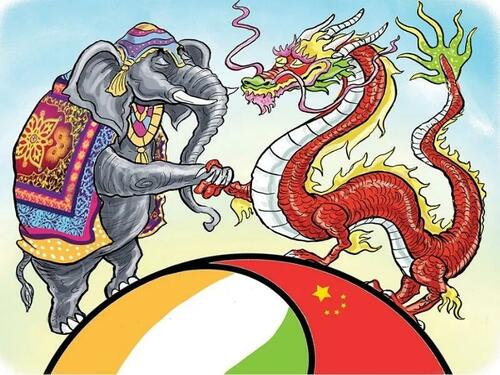Authored by Andrew Korybko via Substack,
The pretext upon which Trump recently doubled tariffs on India to 50% was its continued trade with Russia, which India has refused to curtail for the five reasons explained here, yet it turns out that the US-Russian trade increased by 20% since he returned to office. This was confirmed by Putin himself during his remarks to the press after he met Trump for three-hour-long talks in Anchorage late last week. Leading Indian media NDTV and others then drew attention to this blatant double standard.

No doubt should therefore remain about how hellbent Trump is on derailing India’s rise as a Great Power. The real reason why he doubled tariffs on India wasn’t due to its continued trade with Russia, but to coerce it into opening up its agricultural and dairy markets to American imports. He might also have expected that displaced workers, and some of the 46% of the population employed in these industries would indeed lose their livelihoods, could then become low-cost factory labor for US companies.
Even if Trump is only driven by economic motives in this regard, his permanent policymaking bureaucracy (“deep state”) likely has more sinister ones such as weaponizing the large-scale socio-political unrest that would inevitably follow massive unemployment among Indian farmers. No self-respecting leader could accept these consequences and that’s why Prime Minister Narendra Modi pledged during his speech on India’s Independence Day to support his country’s agricultural industry.
It was little wonder then that NDTV cited sources to report shortly thereafter that a US trade team’s visit to India in late August has been called off and will likely be rescheduled for an as-yet unknown date. Several days prior, US Treasury Secretary Scott Bessent publicly called on the EU to emulate his country’s “secondary sanctions, or secondary tariffs, on India because of their consumption of Russian oil”. The EU still purchases Russian energy, however, so any such sanctions/tariffs would be as hypocritical as the US’.
Nevertheless, seeing as how the EU just subordinated itself as the US’ largest-ever vassal state via their lopsided trade deal, it can’t be ruled out that it’ll follow its patron’s lead. The combined effect of major US and EU tariffs on India could decelerate its growth, which is the fastest in the world, but the socio-political consequences would still be more manageable than if it opened its agricultural and dairy markets to their exports. India might thus soon recalibrate its multi-alignment policy accordingly.
Chinese Foreign Minister Wang Yi is in India for the first time in three years to discuss their unresolved border dispute that’s toxified bilateral ties since their lethal clashes in summer 2020. Modi will then visit Tianjin at the end of the month for the SCO leaders’ summit. India’s worsening ties with the West, first the US and perhaps soon also the EU, might thus serve as the catalyst for taking its incipient rapprochement with China even further through the resumption of border trade as reported.
Any meaningful improvement of Sino-Indo ties, especially in the economic dimension (which might first require making progress on resolving their border dispute), could prompt Trump to either walk back his hardline policy on India to court it away from China or punitively double down on this approach. The first could help repair their ties even though India’s trust in the US might remain shattered while the second could turbocharge multipolar processes. Observers should therefore keep a very close eye on all of this.
Loading recommendations…


